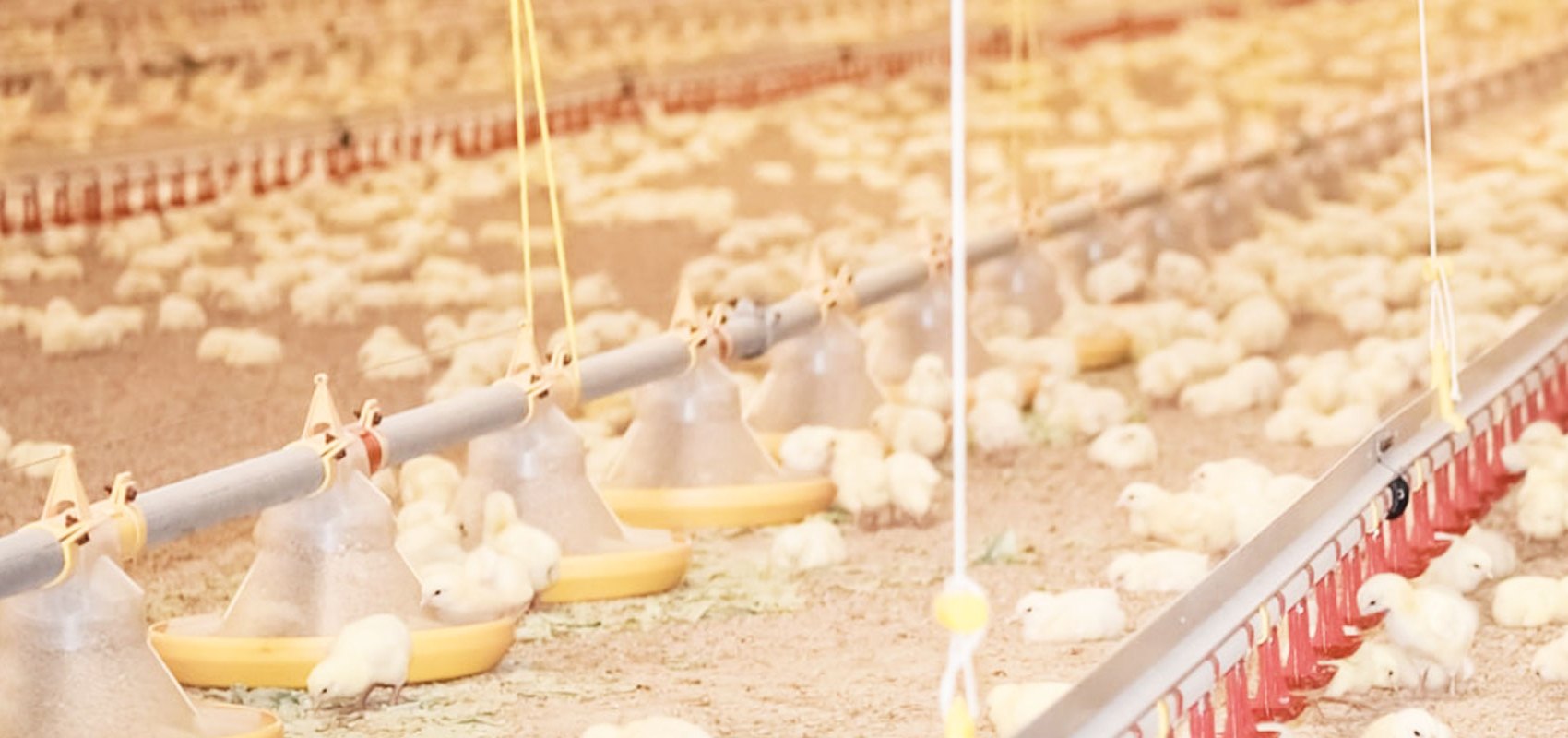As winter fast approaches, it is vital that environmental conditions of broiler houses are optimised prior to chick arrival and right through the flock, to avoid poor performance and health problems.
Barry Thorp, veterinary adviser at SenseHub™ Poultry, says correct temperature and humidity on chick arrival and during the early brood stage is paramount. Precise breed requirements are readily available from most major breeding companies. “If these environmental factors are not correct from the outset, it will comprise a chicks ability to ‘get started’ and consequently have a detrimental impact on the performance of that flock,” says Barry.
“The initial target temperature within a broiler house is usually 300C, which needs to be consistent throughout the whole shed before chicks arrive. Anything below this means the birds will be using energy to keep warm, which increases their metabolic rate, reduces weight gain and can lead to the development of ascites, which can result in further health problems.
“In colder months, it can be particularly difficult to maintain even shed temperatures, but it is fundamental to bird performance. It’s therefore important to monitor this closely, at multiple different locations within sheds, and re-evaluate the ventilation and air movement if required,” he adds.
Humidity is another important factor that if not optimised can particularly effect young birds.
“If humidity runs below 60% it can result in a dry environment. Young chicks that are even slightly dehydrated tend not to eat enough which consequently effects growth rates. If humidity levels are inconsistent throughout the shed, this can also result in uneven birds.
“In addition, high humidity in combination with high carbon dioxide and ammonia levels can often result in respiratory problems as well as reduced performance,” explains Barry.
“To avoid these issues, reviewing and improving air circulation within sheds is again key to maximising performance.”
When looking at temperature and humidity trends, it’s clear the current methods in place to monitor this data aren’t accurate enough. However, there is solution available which comprises of wireless sensors that provides accurate real-time data and allows producers to take accuracy to the next stage.
“This technology can monitor key health and environmental parameters, including temperature and humidity, remotely and in real-time. Meaning producers and vets can quickly identify any changes in bird behaviour or detect environmental changes that could indicate a problem, so action can be taken as required,” he adds.
“Being able to collate and analyse data from different poultry houses and sites frequently, means evidence-based decisions can be made from the farm office or at home. Which, in the current situation, allows farm visits to be kept to a minimum, while maintaining a high level of bird health, welfare and performance,” says Barry.
“Extremely cold weather conditions can pose a challenge for producers and often a higher level of attention needs to be paid even more so at this time of year. So, access to these data trends will be fundamental in maximising health, welfare and performance going forward,” he concludes.


